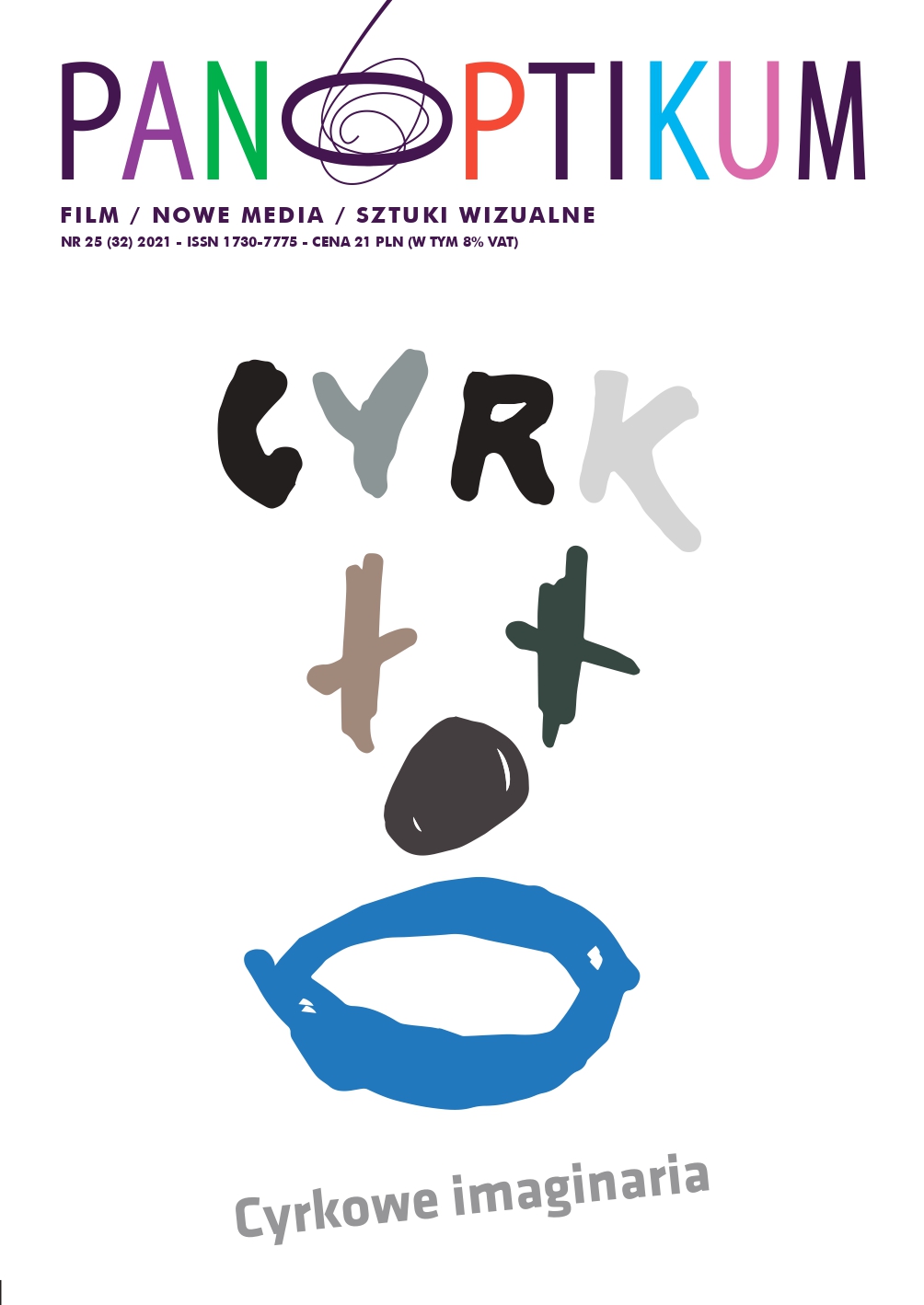Nowy Świat to nazwa cyrku. Nowocześni przeglądają się w obrazach Giandomenica Tiepolo
DOI:
https://doi.org/10.26881/pan.2021.25.01Słowa kluczowe:
Giandomenico Tiepolo, Venice, Carnival, Commedia dell’Arte, circusAbstrakt
The 18th century Venetian Republic reconfigured the pop-cultural modernity with its collapse. On the sketches and frescoes of Giandomenico Tiepolo, the figures of Commedia dell’Arte banished from the city scene transform the erstwhile carnival into an inkling of the New World, the art of the circus. In the 20th century, authors and philosophers uncover a terrifying prophecy of the collapse of universal values from those visionary works.
Downloads
Bibliografia
Agamben, G. (2002). L’ aperto: L’ uomo e l’animale. Turyn: Bollati Boringhieri.
Agamben, G. (2008). Homo sacer. Suwerenna władza I nagie życie, przeł. M. Salwa. Warszawa: Prószyński i S-ka.
Agamben, G. (2009a). Czas, który zostaje. Komentarz do „Listu do Rzymian”, przeł. S. Królak. Warszawa: Wydawnictwo Sic!.
Agamben, G. (2009b). O zaletach i niedogodnościach życia wśród widm, [w:] idem, Nagość, przeł. K. Żaboklicki. Warszawa: Wydawnictwo W.A.B..
Agamben, G. (2019). Pulcinella, czyli „Rozrywka dla dzieci” w czterech odsłonach, przeł. J. Ugniewska. Warszawa: Fundacja Augusta Hrabiego Cieszkowskiego.
Bieńkowska, E. (1999). Co mówią kamienie Wenecji? Gdańsk: słowo/obraz terytoria.
Brion, M. (1962). Venice. The Masque of Italy, translate N. Mann. London: Elek Books.
Calasso, R. (2009). Tiepolo Pink (e-book), translate A. McEwen. New York: Alfred A. Knopf.
Fava, A. (2015). Official Recognition of Pulcinella. The One Who Saved the Commedia from Extinction by Securing Its Continuity to the Present Day, translate M. Perlman, [w:] J. Chaffee, O. Crick (eds.), The Rouledge Companion to Commedia dell’Arte. London: Routledge.
Fehl, P.P. (summer 1979). Farewell to Jokes: The Last Capricci of Giovanni Domenico Tiepolo and the Tradition of Irony in Venetian Painting, „Critical Inquiry”, no. 4.
Foley, B. (2015), Principles of Comedy for Commedia dell’Arte, [w:] J. Chaffee, O. Crick (eds.), The Routledge Companion to Commedia dell’Arte. London: Routledge.
Johnson, J.H. (2011). Venice Incognito. Masks in the Serene Republic (e-book). Berkeley: University of California Press.
Kondrasiuk, G. (2012). O cyrku w świecie widowisk, [w:] G. Kondrasiuk (red.), Cyrk w świecie widowisk. Lublin: Warsztaty Kultury w Lublinie.
Mariuz, A., Pavanello, G. (2004). Tiepolo: Ironia e comico. Venice: Marsilio Editori. McCarthy, M. (1972). The Stones of Florence and Venice Observed. London: Penguin Books.
Monnier, Ph. (1908). Venise au XVIIIe siècle. Brussel–Paris: Parrin. Romanelli, G. (2003). Giovanni Domenico Tiepolo, [w:] Wenecja. Arcydzieła malarstwa, przeł. G. Scripe Nepi, A. Gentili, G. Romanelli, Ph. Rylands. Warszawa: Arkady.
Sgarbi, V. (2016). Giandomenico Tiepolo. Il sublime e il naturale, [w:] idem, Dall’ombra alla luce Da Caravaggio a Tiepolo (e-book). Milano: La nave di Teseo.
Szczerbakiewicz, R. (2005). Dwie kobiety – Bieńkowska i Wenecja. Portret miasta i autoportret autorki w tomie „O czym mówią kamienie Wenecji”, [w:] E. Durys, E. Ostrowska (red.), Gender: Wizerunki kobiet i mężczyzn w kulturze. Kraków: RABID.
Starobinski, J. (1992). Ostatnie blaski Wenecji (fragm. 1789. Emblèmes de la Raison), tłum. M.L., „Zeszyty Literackie”, nr 3(39).

 Uniwersyteckie Czasopisma Naukowe
Uniwersyteckie Czasopisma Naukowe









